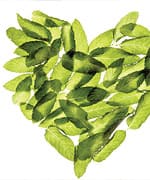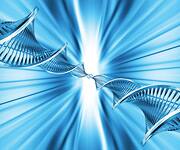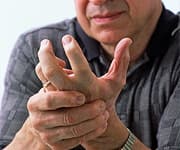Life Extension Magazine®
Derived from the Greek word meaning royal,1 basil is a versatile herb that has lived up to its pedigree. With its wealth of nutrients, from hefty amounts of vitamin K and calcium, to its high antioxidant oils, basil offers an array of health-enhancing benefits ranging from protection against DNA damage to combating stress.1 In addition, the peppermint-like leaves of basil are loaded with beta-caryophyllene, an anti-inflammatory compound that may treat conditions such as arthritis and inflammatory bowel disease.2 An abundance of evidence is emerging to support basil’s reputation as an herbal remedy for thousands of years, making this undervalued herb a formidable opponent against some of today’s most prevalent health problems. Basil’s HistoryIndigenous to Asia and Africa, basil (Ocimum spp.) is part of the Lamiaceae mint family. It’s grown in regions throughout the world, but primarily in France, Greece, Egypt, and United States. There are over 60 varieties of this potent herb, each differentiated by its leaf appearance and pungency. The most common form is sweet basil, which is most notably used in culinary practices.1,3 DNA Protector
Among basil’s most prized benefits is its ability to protect DNA, the storage form of genetic information. DNA is packaged in functional units called chromosomes. Chromosomes can be damaged by exposure to radiation, producing free radicals known as reactive oxygen species that alter the genetic material inside cells and cause DNA mutations that are linked to the growth of cancer.4 Two water-soluble flavonoids, orientin and vicenin, present in basil, might provide protection against radiation at the cellular level. In a study published in the journal Radiation Research, mice received orientin or vicenin before being exposed to radiation in bone marrow cells. Scientists concluded that both flavonoids significantly reduced chromosomal damage, most likely because of their antioxidant properties.5
AntibacterialNumerous studies have shown basil’s potential to inhibit the growth of pathogenic bacteria. These antibacterial effects are attributed to the main constituents in basil’s essential oils, including estragole, eugenol, rosmarinic acid, linalool, methylchavikol, and oleanolic acid.1 In a study done by Iranian scientists, basil’s essential oils were shown in laboratory tests to be effective in retarding the growth of bacteria strains Staphylococcus aureus, Bacillus cereus and Escherichia coli.6 Furthermore, rosmarinic acid was shown to be effective in restricting the growth of Pseudomonas aeruginosa, a bacterium associated with lung infections, according to a research study in the journal Plant Physiology and Biochemistry.7 Some species of bacteria have become resistant to multiple drugs such as antibiotics, making them more difficult to treat. Bulgarian researchers discovered that widespread drug resistant bacteria species Enterococcus, Pseudomonas, and Staphylococcus all were inhibited when exposed to basil’s essential oils.8 Heart Boosting Benefits
Due to its high antioxidant content, researchers have expressed interest in basil’s influence on heart health. In a recent study published in the journal Oxidative Medicine and Cellular Longevity, scientists divided rats into three groups: a high cholesterol diet with and without basil leaf extract for seven weeks, while a third control group received a normal diet only. The results showed that basil leaf extract prevented the development of high total cholesterol and LDL cholesterol in rats fed a high cholesterol diet.9 Researchers found that basil leaf extract increased the use of cholesterol for bile acid production, making it less likely to accumulate in the liver and cause high cholesterol. A separate study suggests the herb can lower blood pressure, a powerful risk factor for cardiovascular disease and stroke. Chinese researchers discovered that hypertensive rats fed basil leaf extracts daily for four weeks reduced systolic blood pressure by 20 mmHg and diastolic blood pressure by 15 mmHg.10 As a rich source of both magnesium and beta-carotene, basil may support cardiovascular health. Increased dietary magnesium intake has been associated with lower levels of inflammation and endothelial dysfunction, according to a review published in the American Journal of Clinical Nutrition.11 Researchers at the Netherlands National Institute for Public Health and the Environment (RIVM) assessed the relationship between carotenoids, tocopherols and vitamin C intake and heart disease deaths in elderly men, aged 65 or older, over a 15-year period. Taking into account confounding factors of age and smoking, scientists concluded that an increased intake of carotenoids reduced heart disease mortality by 20%.12 Stress, Anxiety, and Immune SystemAlthough acute stress is a normal part of life, chronic stress and stress related disorders such as anxiety can initiate changes in immune response that over time lead to suppression of immune function.13 Basil has shown the ability to alleviate stress, according to a study published in the journal Evidence-Based Complementary and Alternative Medicine. Scientists examined the effects of basil extract on stress symptoms in 158 men and women. Patients received a placebo or 1,200 mg of basil extract per day for six weeks. At the end of the study, the treatment group showed a 39% decrease in general stress symptoms, such as sleep problems, exhaustion, and forgetfulness, and an 87.5% reduction in stress related sexual problems.14 Another study conducted by Indian scientists revealed that 35 subjects with anxiety disorder taking 1,000 mg of basil leaf extract per day for 60 days reduced anxiety by 34.2% and stress by 27.5%.15 Basil leaf extract has a positive impact on the regulation of hypothalamo-hypophyseal-adrenocortical axis (HHA axis), a system that controls reactions to stress. Basil may also modulate immunity directly. Researchers at All India Institute of Medical Sciences in New Delhi, India provided 22 men and women with either 300 mg of basil leaf extract or a placebo daily for four weeks. Participants who consumed the basil leaf extract had greater improvements in interleukin-4, T-helper cells and natural killers, all immunological parameters, compared to the group taking a placebo.16
Diabetes ManagementAt the core of any diabetes management plan is the regulation of blood sugar levels. In a 4-week study conducted by Azad University of Agriculture and Technology in Kanpur, India 40 patients with type 2 diabetes received a placebo or 2.5 g of a powdered dried basil leaf per day. At the end of the 4 weeks, the treated group recorded a 17.6% reduction in fasting blood glucose levels and a 7.3% decrease in postprandial blood glucose levels.17 It is believed that one possible mechanism for basil’s blood glucose lowering effect is ursolic acid, which has been shown to act as an alpha-glucosidase inhibitor, meaning it reduces the absorption of glucose in the small intestine and prevents a rise in blood sugar levels.18 Fight Arthritis With Flavor
While there are multiple compounds in basil’s essential oils, eugenol shows the greatest potential for helping people with arthritis. It has demonstrated the greatest ability of all basil essential oil compounds to decrease the activity of cyclooxygenase (COX), an enzyme that increases the production of pro-inflammatory cells.19 A compelling study performed by the University of Science Malaysia in Kelantan, Malaysia sheds light on eugenol as an arthritis fighter. Researchers induced arthritis in the right paw and knee of rats, resulting in increased swelling. After 26 days taking ginger and eugenol oil, researchers observed significant decreases in both paw and knee joint swelling.20 SummaryAlthough basil is primarily known as a flavor enhancer, mounting research indicates that adding this herb to your daily diet can provide anti-inflammatory, antibacterial, and anti-stress properties, making it a well-rounded fighter in the battle to improve overall health. If you have any questions on the scientific content of this article, please call a Life Extension® Health Advisor at 1-866-864-3027. | ||||||||
| References | ||||||||
| 1. Available at: http://www.whfoods.com/genpage.php?tname=foodspice&dbid=85. Accessed January 31, 2012. 2. Gertsch J, Leonti M, Raduner S, et al. Beta-caryophyllene is a dietary cannabinoid. PNAS. 2008 June; 105(26): 9099-104. 3. Available at: http://www.ienica.net/marketdatasheets/essentialoilsmdssmall.pdf. Accessed January 31, 2012. 4 Greenman C, Stephens P, Smith R, et al. Patterns of somatic mutation in human cancer genomes. Nature. 2007 Mar; 446(1732): 153-8. 5. Nayak V, Devi PU. Protection of mouse bone marrow against radiation-induced chromosome damage and stem cell death by the ocimum flavonoids orientin and vicenin. Radiat Res. 2005 Feb; 163(2): 165-71. 6. Moghaddam AMD, Shayegh J, Mikaili P, Sharaf JD. Antimicrobial activity of essential oil extract of Ocimum basilicum L. leaves on a variety of pathogenic bacteria. J Med Plant Res. 2011 Aug; 5(15):3453-6. 7. Bais HP, Walker TS, Schweizer, Vivanco JM. Root specific elicitation and antimicrobial activity of rosmarinic acid in hairy root cultures of Ocimum basilicum. Plant Physiol Biochem. 2002 Apr; 40(11):983-95. 8. Opalchenova G, Obreshkova D. Comparative studies on the activity of basil-an essential oil from Ocimum basilicum L.-againist multidrug resistant clinical isolates of the genera Staphylococcus, Enterococcus and Pseudomonas by using different test methods. J Microbiol Methods. 2003 Jul; 54(1):105-10. 9. Suanarunsawat T, Ayutthaya WD, Songsak T, Thirawarapan S, Poungshompoo S. Lipid-lowering and antioxidative activities of aqueous extracts of Ocimum sanctum L. leaves in rats fed with a high-cholesterol diet. Oxid Med Cell Longev. 2011 Jul; 2011: 962025. 10. Umar A, Imam G, Yimin W, et al. Antihypertensive effects of Ocimum basilicum L. (OBL) on blood pressure in renovascular hypertensive rats. Hypertens Res. 2010 Jul; 33(7):727-30. 11. Bo S, Pisu E. Role of magnesium in cardiovascular disease prevention, insulin sensitivity and diabetes. Curr Opin Lipidol. 2008 Feb; 19(1):50-6. 12. Buijsse B, Feskens E, Kwape L, Kok FJ, Kromhout D. Both alpha-and beta-Carotene, but not tocopherols and vitamin C, are inversely related to 15-year cardiovascular mortality in Dutch elderly men. J Nutr. 2008 Feb; 138(2):344-50. 13. Gouin JP, Hantsoo L, Kiecolt-Glaser JK. Chronic stress, immune dysregulation, and health among older results: a review. Am J of Lifestyle Med. 2011 Jan; 5(6): 476-85. 14. Saxena RC, Singh R, Kumar P, et al. Efficacy of an extract of Ocimum tenuiflorum (Ocibest) in the management of general stress: a double blind, placebo-controlled study. Evid Based Complement Alternat Med. 2011 Jul; 2012: 894509. 15. Bhattacharyya D, Sur TK, Jana U, Debnath PK. Controlled programmed trial of Ocimum sanctum leaf on generalized anxiety disorders. Nepal Med Coll J. 2008 Sept; 10(3):176-9. 16. Mondal S, Varma S, Bamola VD, et al. Double-blinded randomized controlled trial for immunomodulatory effects of Tulsi (Ocimum sanctum Linn.) leaf extract on healthy volunteers. J Ethnopharmacol. 2011 Jul; 136(3):452-6. 17. Agrawal P, Rai V, Singh RB. Randomized placebo-controlled, single blind trial of holy basil leaves in patients with noninsulin-dependent diabetes mellitus. Int J Clin Pharmacol Ther. 1996 Sept; 34(9):406-9. 18. Benalla W, Bellahcen S, Bnouham M. Antidiabetic medicinal plants as a source of alpha glucosidase inhibitors. Curr Diabetes Rev. 2010 Jul; 6(4):247-54. 19. Kelm MA, Nair MG, Strasburg GM, Dewitt DL. Antioxidant and cyclooxygenase inhibitory phenolic compounds from Ocimum sanctum Linn. Phytomedicine. 2000 Mar; 7(1):7-13. 20. Sharma JN, Srivastava KC, Gan EK. Suppressive effects of eugenol and ginger oil on arthritic rats. Pharmacology. 1994 Nov; 49(5):314-8. 21. Available at: http://www.food.com/recipe/la-madeleines-tomato-basil-soup-5368. Accessed February 6, 2012. |





